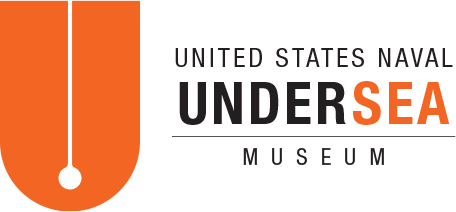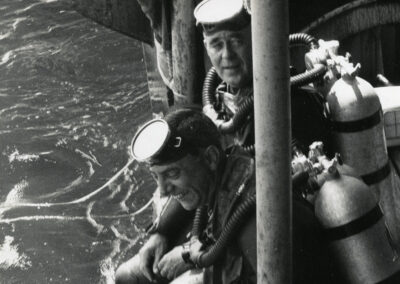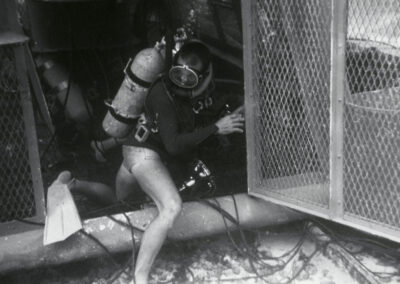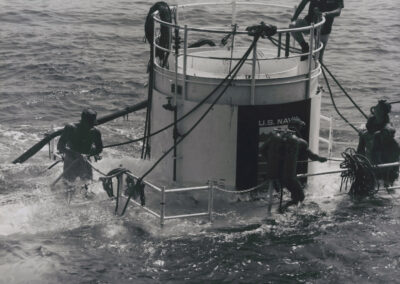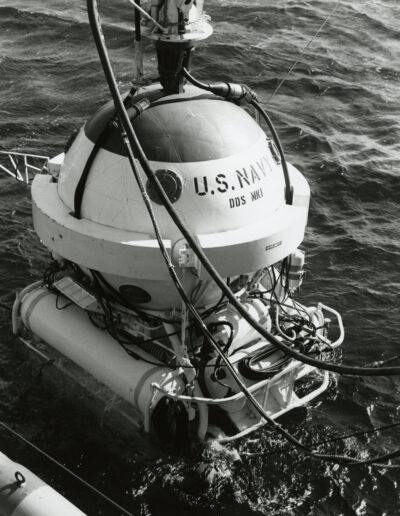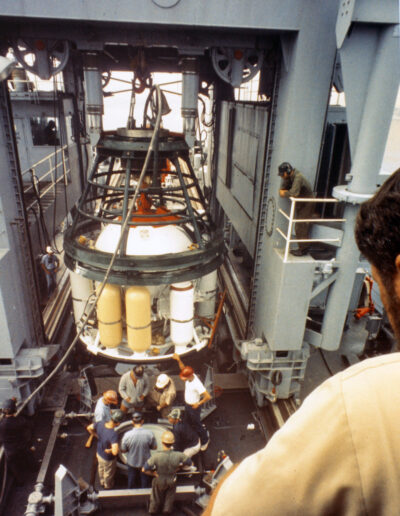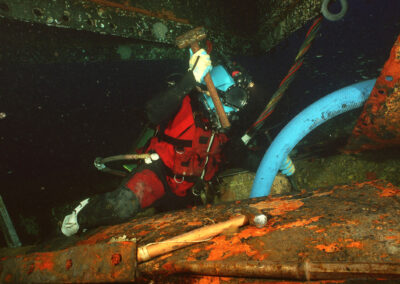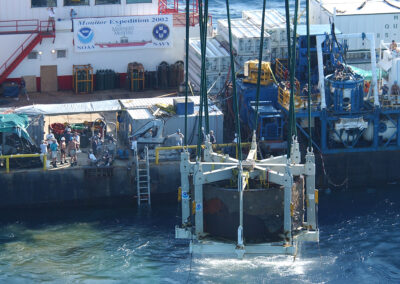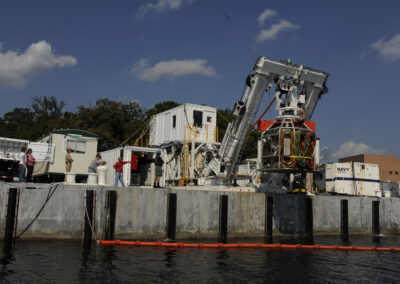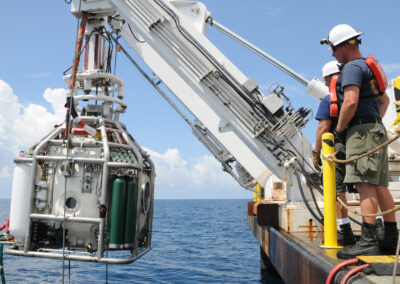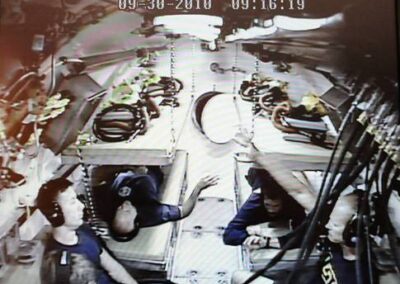Saturation Diving
 The Challenge
The Challenge
Surface-supplied diving limited the length of time divers could work underwater, and required lengthy decompression periods for short bottom work times.
 The Solution
The Solution
Dr. George Bond, a Navy scientist, introduced the concept of saturation diving the 1950s. It allowed divers to live and work underwater for days or weeks at time before making a single, comparatively short decompression period. NEDU provided practical support for Dr. Bond’s hypothesis by developing special saturation diving decompression tables. More recently, it tested and certified the Navy’s newest saturation diving system.
The Sealab Projects
In the 1960s, Dr. Bond staged a trio of saturation diving experiments that let divers work and live in undersea habitats called Sealabs. NEDU provided training and support to the Sealab projects, most significantly by developing and testing the decompression schedules divers used after days or weeks underwater. Because it had to address the effects of both saturation diving and the use of helium as a breathing mixture, these procedures were more complicated to develop.
To prepare for Sealab III, NEDU divers performed 28 helium-oxygen saturation dives to depths of 825 feet over a period of three years. NEDU medical officers used the findings from these dives to establish safe decompression procedures for the Sealab III aquanauts.
Saturation Diving Decompression Tables
In addition to the Sealab decompression tables, NEDU personnel developed tables for other saturation diving applications. In the late 1960s, the Navy introduced the Mark 1 Deep Diving System, its first saturation diving support system. NEDU tested and established the decompression procedures for divers to use after working from the Mark 1.
In the 1970s, NEDU pioneered special decompression tables that allowed saturation divers to change depth as they worked. Before the new procedures, if saturation divers changed their working depth their decompression procedures would be skewed, risking incorrect or extended decompressions.
The Monitor Salvage Expeditions
In the late 1990s the Navy undertook a project to raise portions of the sunken Civil War ironclad USS Monitor as a training exercise for Navy divers. During the 2001 and 2002 operations, the Navy relied heavily on saturation diving to accomplish most of the underwater work. NEDU supplied the saturation divers and provided saturation diving guidance and expertise to the project.
Saturation Fly-Away Diving System
The effective use of saturation diving during the USS Monitor expeditions revived the Navy’s interest in maintaining its own saturation diving system. A decade after retiring its last deep diving system, the Navy initiated development of a new, highly mobile Saturation Fly-Away Diving System (SAT FADS). NEDU handled all manned testing and certification of the new system.
